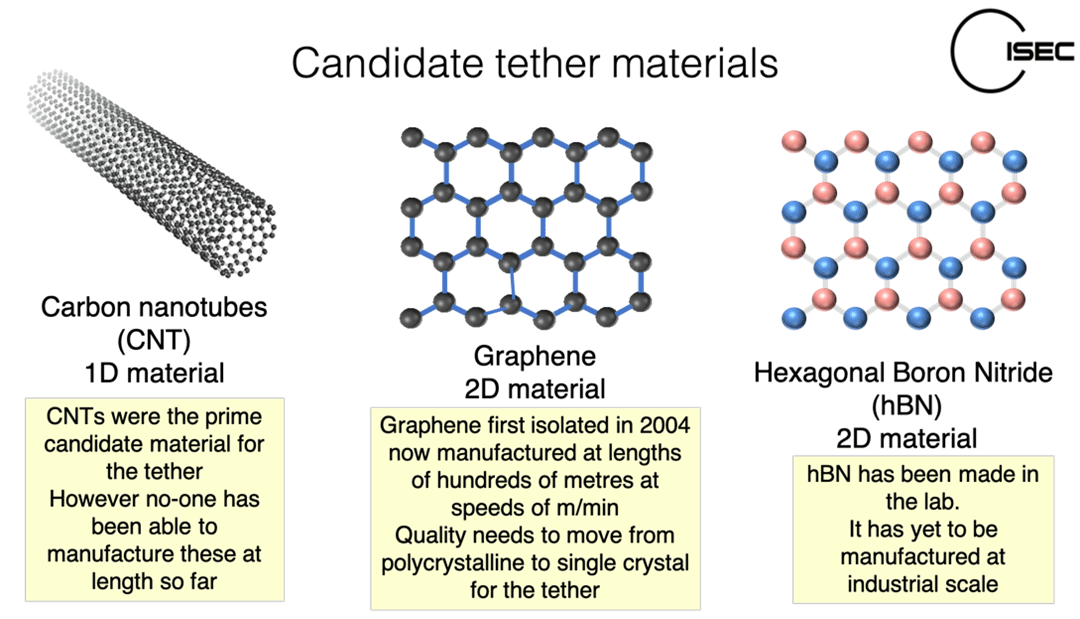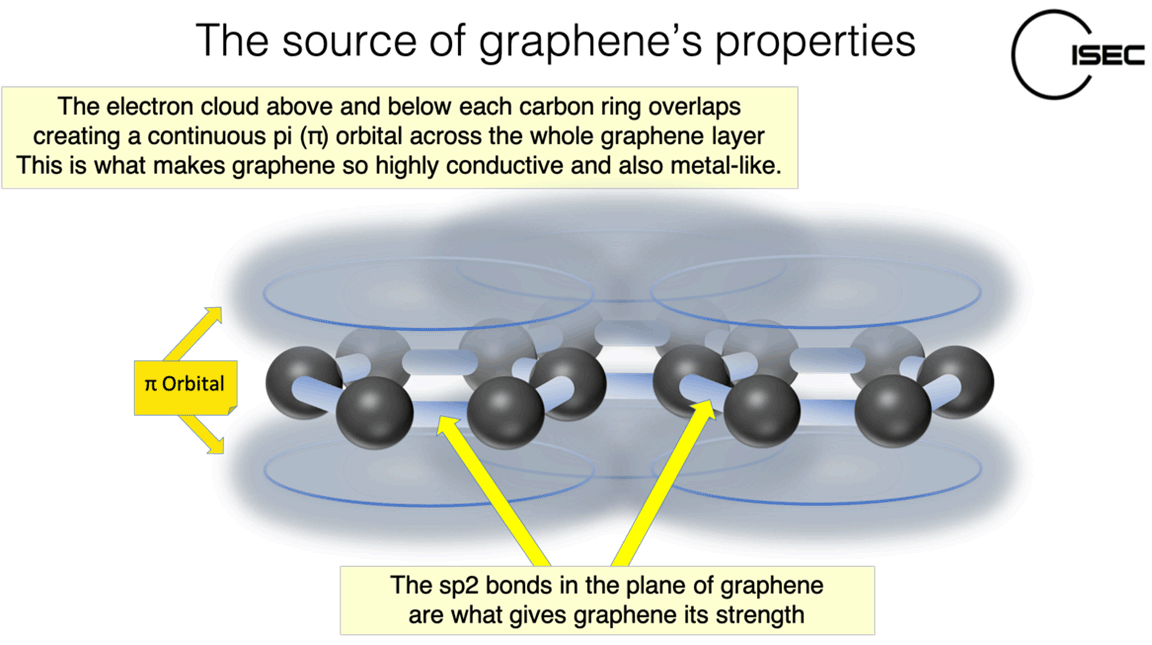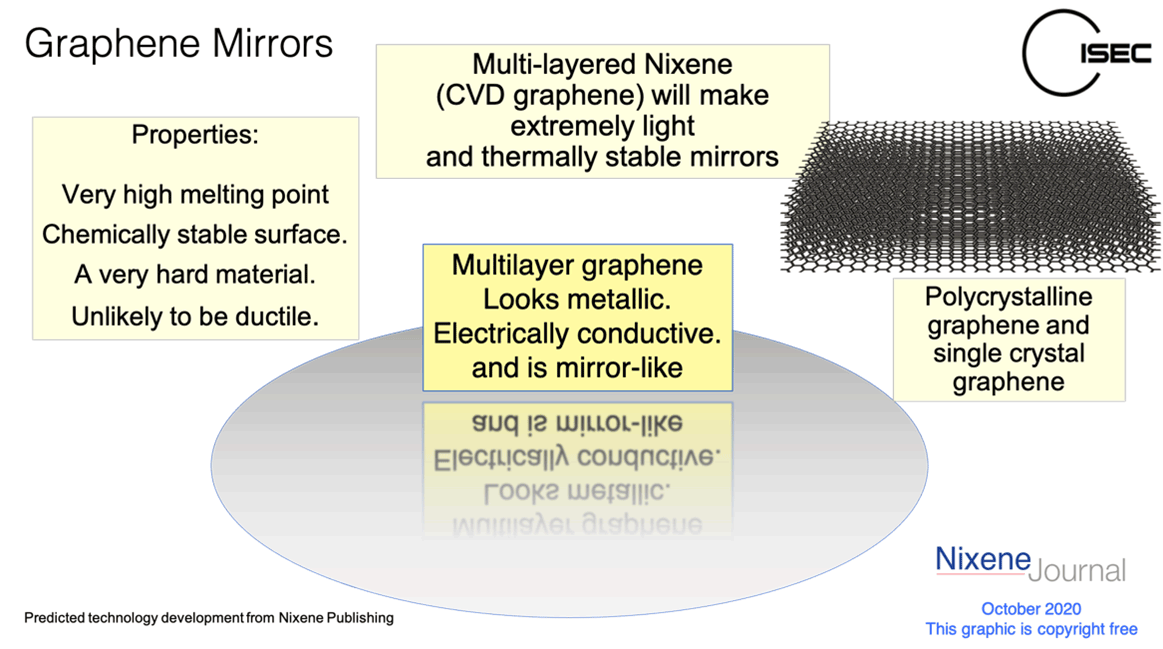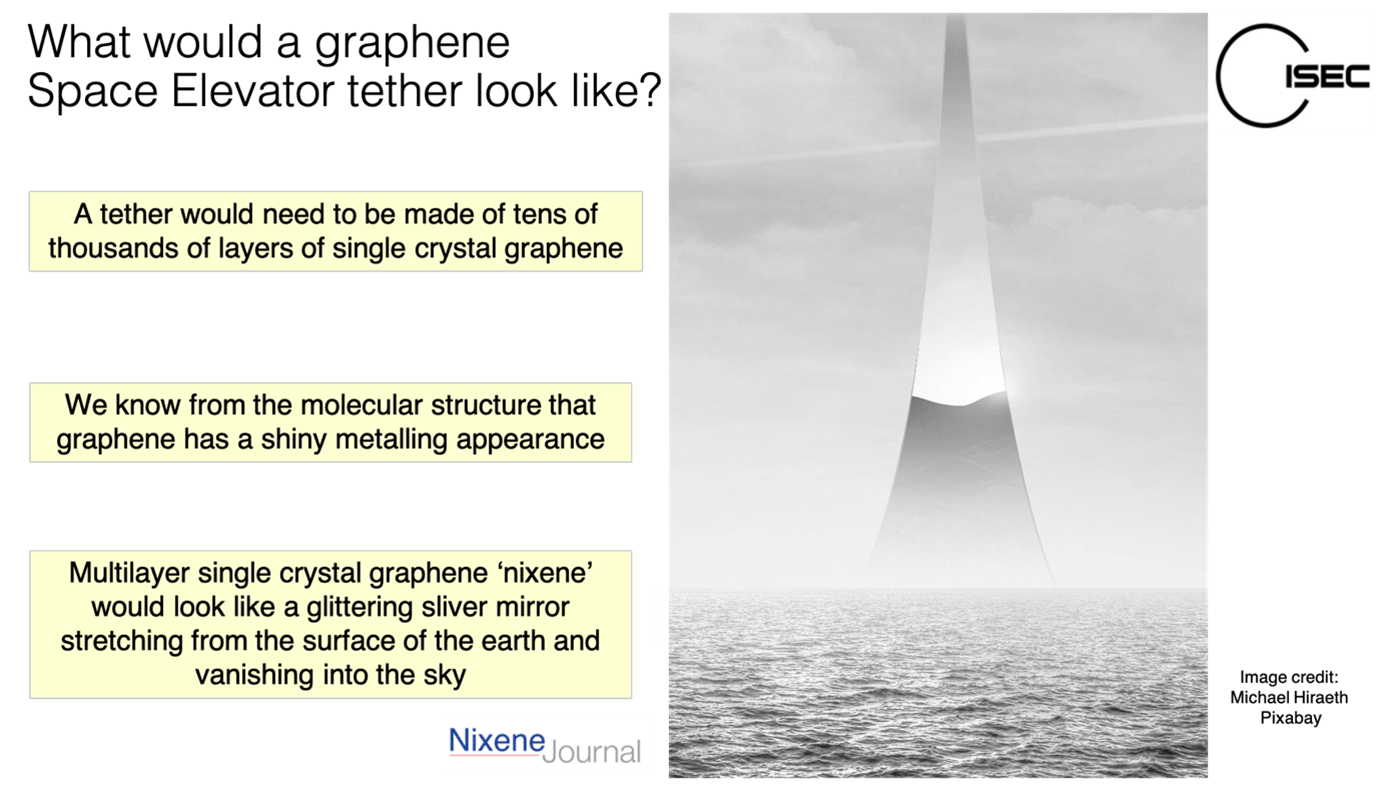International Space Elevator Consortium
December 2020/January 2021 Newsletter
In this Issue:
Editor’s Note
President’s Corner
Architecture Note
Demand Pull Update
News From the GEIC
History Corner
Study Update
Upcoming Events
Contact Us/Support Us
Editor’s Note
Dear Fellow Space Elevator Enthusiast,
As you can see by the title, this is the December/January edition of the ISEC newsletter! It is my holiday present from Pete Swan to be able to take a break during the season from gathering articles, compiling them, and publishing a newsletter. You will see the next one in early February. That doesn’t mean we won’t be working on things related to the space elevator, though...keep up with what is going on through our social media links in the footer of our website.
What are we working on, you may ask? Most especially, the Space Elevator conference that is planned in conjunction with the International Space Development Conference (ISDC) in May. We are also developing a new vision statement, and scientific research and studies are still underway (check out “News from the GEIC” for more from Adrian Nixon!)
Happy Holidays from the ISEC Board of Directors!
Sandee Schaeffer
Newsletter Editor
President's Corner
by Pete Swan
Dreaming Big leads to Strategy
The space community is in the middle of living big dreams. Over the last six or seven years, it has been obvious that the human race was moving off planet - first to the Moon and then on to Mars. This series of big dreams has been pushed by NASA's successes, international missions to Mars, the back side of the Moon, and the commercial development of visions for companies and/or individuals. A few are: Mr. Musk's expectation of a Colony on Mars with up to a million settlers, Mr. Bezos's statement that he is building the road to space for the next generation, and the National Space Society's vision of millions of people living and working beyond Earth.
The Space Elevator community must match those dreams with some of our own. I have two special missions I believe in and would like to support with an aggressive and massive Space Elevator transportation Infrastructure. I dream of improving the human condition on Earth. I know we can contribute towards this dream with the delivery of 5 million tonnes of cargo to GEO, enabling the Space Solar Power architecture. In addition, I dream of living and working on Mars. As a rocket scientist, I have long dreamed of going off-planet and contributing to the development of a settlement - on the Moon, Mars, or even at L-5.
These dreams are important as they led to specific visions of what can be done and then become need statements for developmental projects. I have seen this process work several times for mega-projects and feel confident that our dreams can lead to the development of Space Elevators. Dreamers make things happen as much by spreading the enthusiasm at any actual step. What we need are dreamers who stimulate the rest of us to action.
Keep Climbing - and Dreaming!
Pete
Architecture Note #34
by Michael A. Fitzgerald
Senior Exec VP and Co-Founder
Galactic Harbour Associates, Inc
Space Elevator Transportation & Enterprise Systems
Architecture Engineering an Enterprise Zone
Personal Prolog
This is an Architecture Note. It is the opinion of the Chief Architect. It represents an effort to document ongoing science and engineering discussions. It is one of many to be published over time. Most importantly, it is a sincere effort to be the diary, or the chronicle, of the multitude of our technical considerations as we progress; along the pathway developing the Space Elevator.
Michael A. Fitzgerald
What will be available at the GEO Region and the Apex?
At this point, it has been a while. Traveling I mean. Just last year, hopping on an airplane to go somewhere was almost second nature. It wasn’t really fun, and getting there was such a relief! If you are at all like me, you brought the book to read, the snack to nibble on, and avoided the on board bathroom or at least avoided the line. One saving grace – if you arrived at the airport & realized that you forgot your whatever … you could buy it a few yards down from the departure gate. As often as not, you plugged in your phone or laptop; power is the essential commodity. The symbiotic relationship in this arrangement has morphed over the decades but -- transportation is provided by the plane, and the airport departure lounge enterprise provides the necessities.
In the future, ISEC foresees cargo flights departing from the Apex at least daily. It is expected that these departures to the Moon, Mars, or other destinations in the solar system will be operated with precision and care … and be second nature. The intimate adjacency between the transportation system and the Apex enterprises will be different. Drifting from the airport departure gate to get a snack before boarding isn’t the vision for GEO Region and Apex Region enterprises. Let’s look at those over the next two months.
Where did these Enterprises come from?
The GEO Regions at the various Galactic Harbours will be the home to a wide variety of enterprises. Those in situ enterprises will be clients/customers of a set of utilities; power, processing, local transportation around the Region (e. g. by small space tugs), and operate in a rhythm established by the schedule of Climbers arriving at the GEO Region the Apex, and returning down to the Earth Port. The utilities will be there from early on, like the basic utilities at your first apartment after college. Basic utilities, thus, are the first enterprises in each Region; they are essentially part of the Space Elevator Transportation System. Availability of basic utilities attract the visionary enterprises that will later move into GEO Region and the Apex Region.
These enterprises are the 21st century kin of the enterprises that now surround airports, train stations, and harbors. As I wrote in January 2017, in Architecture Note #5:
That brings us to the GEO Region as a place. Is it a place with a reason; like New York? … or is it a place in the middle of nowhere; to just pass through? I happen to think wherever we have Space Elevator activity, THAT ‘wherever” will become a place. For example, New York became a place because it had a natural harbor. After it became a place, other things started happening at that place. Like a Port of Entry, Wall Street, Fulton’s Fish Market, the Bronx Zoo, Broadway, and all those museums; all because it was lucky enough to have a harbor. Eventually, cruise ships stopped there.
Now in my mind, the Space Elevator at the GEO Region is not just a place to just pass through. As a place, it is more like New York and its harbor. It is different than Lincoln, Nebraska; Lubbock, Texas; or Gallup, New Mexico. The GEO Region seems like part of a larger thing. It is a port of entry and return; part of the Galactic Harbour.
In our vision… we see a great Space Elevator Transportation System that opens space; in the same way the railroad opened up the US west. It is a marvel of Kepler’s physics and a marvel of humankind. We see the Galactic Harbour importing needed commodities (Power and unique minerals) and exporting the noxious (Nuclear waste and Space debris).
As part of that Harbour, we see a place above; that is enabling improvement in life’s quality - and its enjoyment. We call that place the GEO Region. In and near that region we see unique small spacecraft and robots that refuel … repair … construct … assemble … inspect; that do whatever we ask. We see all that occurring in the GEO Region in the 2040’s; all part of the Galactic Harbour.
In Closing
WE have often said that we don’t know all the answers, but we do know that the path we are on will get us to the answers; and to our vision.
Fitzer
Demand Pull - Space Settlements (Mars and Earth-Moon L-5)
by Pete Swan
In the October newsletter I explained what Demand Pull was and why we (Space Elevator community) need these customer requirements. We discussed Space Solar Power program with its stated requirement for 5 million tonnes to GEO. This newsletter input will discuss the concept of settlements from the viewpoint of how much mass is requested by the customer. There are two concepts that have been greatly discussed: Elon Musk's Mars Colony and Dr. O'Neill's L-5 rotating cylinder. Here are a few descriptive sentences and then a recognition that they need massive movement of cargo to fulfill their requirements.
Mr. Musk's Mars settlement has been discussed extensively ever since he proposed a rocket design that could provide massive movement towards Mars. His design of the Starship vehicle has great hopes and it should be successful (my guess as he does achieve most of his visions/expectations). In addition to suggesting that he will have a colony with upwards of a million settlers in place within his lifetime, he has stated that he requires 1,000,000 tonnes of cargo to support those on Mars. This customer need is straightforward. His images are well laid out and his understanding of the problem is excellent. As such, his Demand Pull for a transportation infrastructure is 1 million tonnes delivered during the decades of 2020 through 2060.
An older dream of the National Space Society (carried over from the original L-5 Society) is that they create a working and living space at the stable location trailing the Moon at an equivalent radius from the Earth. This L-5 orbital spot will provide a very suitable location for placing a million people inside a rotating structure. The dreams, visions, images and engineering designs have been around since the mid 1970s. However, the ability to deliver 11 million tons of supplies, infrastructure, power, water, oxygen and fuel was just non-existent. As such, the dream has been "out there" but not fulfilled. Once again, an unsatisfied customer need.
Demand Pull is when a future customer needs something and asks the developer to supply it. These two settlements have been dreamed of and are now closer to fulfillment for two reasons. The Human race has decided to move off planet making it a dream of many instead of a few in the space societies; and, the second is that the Space Elevator is very close to being started - enabling the construction, supplying and staffing of the colonies. At 170,000 tonnes per year delivery to GEO and beyond, these customers can be satisfied.
News from the GEIC
by Adrian Nixon
What would a tether made from 2D materials look like?
At the time of writing there are three potential materials that are light enough and strong enough to make the tether for the space elevator. Carbon nanotubes, Graphene and hexagonal Boron Nitride.
Of the three-candidate materials graphene is emerging as the most likely at present because the industrial manufacturing process has advanced rapidly. Graphene can now be made at industrial lengths and speeds. The quality is not good enough for a tether at the moment but given the pace of manufacturing progress this can now be considered a credible future material.
A graphene tether has yet to be made for real so we need to look at the molecular structure of graphene.
[Note: This paragraph corrects an error in the emailed version of the newsletter.] We know that graphene has an electron cloud called a pi (π) orbital above and below the plane of the rings. When photons arrive at this surface, they encounter the electrons. Some absorb these photons promoting the electrons to a higher energy level. When the electrons drop back down to a lower energy level, the phtons are re-emitted, and this is what creates the characteristic metallic appearance.
This means bulk, multi-layered graphene will look like a shiny metallic mirror. This bulk material is what will be used to make the space elevator tether.
So, to answer the question posed at the start, a space elevator tether would look like a glittering sliver mirror ascending into the sky piercing the clouds to reach for space.
History Corner
by David Raitt
A Brief History of ISEC
The efforts of Brad Edwards to define and design a doable space elevator and his convening of an international conference on the topic in Seattle 2002 led to an increasing body of individuals interested in pursuing the dream of building a space elevator. The first conference was followed by others on an annual basis with participants discussing the latest developments, details and research. After the 2008 Space Elevator Conference, there were many committed and enthusiastic participants who felt they should have some kind of formal leadership and direction for their activities. Accordingly a small team started discussing the need for an organization that would pull together like-minded professionals from all disciplines, and the decision was taken to create an International Space Elevator Consortium (ISEC) with a President, board of Directors, and active members. Fittingly, Brad Edwards was elected the first President of ISEC, but he left after only a month or two; Ted Semon then took over and was President for the next four years. The current President, Pete Swan, took over from Ted Semon at the Board meeting in August 2105. The current Directors and other officers of ISEC can be viewed at https://www.isec.org/who-we-are.
The thinking was that there was a need for visible technical leadership to promote development, construction, and operation of space elevator infrastructures, and to take space elevator activities forward, particularly in the United States. In addition, the small-dedicated community needed a location to meet periodically and help each other compile and develop information.
The basic organization for attaining the knowledge and developing the processes necessary for the building of a Space Elevator was initially structured around four pillars: Technology Pillar to build upon the science and engineering of the concept; Business Pillar incorporating the economics of the mega-project, both from a commercial and government approach; Legal Pillar addressing the new ground in international space law; and Public Outreach Pillar to encourage education of the public on how a space elevator works it works and even more importantly, why it is necessary.
ISEC was thus created to handle national and international aspects of space elevator research and development and provide a vision and benchmark for other countries as their involvement in space elevators grew. ISEC is now made up of organizations and volunteer individuals from around the world who share the same vision of humanity in space, namely to have a world with inexpensive, safe, routine, and efficient access to space for the benefit of all mankind. Indeed, because of common goals and hopes for the future of mankind, off-planet, ISEC became an Affiliate Organization with the National Space Society in August 2013. ISEC also coordinates its international activities with the two other major societies focusing on space elevators: the Japanese Space Elevator Association, and EuroSpaceward.
The tasks identified at the outset by ISEC as necessary in the then near future were: to continue to leverage NASA’s Centennial Challenges for spreading the word and pulling people together; to ensure that conferences continued to bring people in for technical and professional discussions; and to enable a small set of board members to grow the industry through the power of information and vision (see https://www.isec.org/what-we-do).
With interest and enthusiasm for a space elevator having reached an all-time peak, and with space elevator conferences occurring in both Europe and Japan, as well as the USA, it was felt that the time was right to formalize the organization. An initial set of directors and officers were elected and they set to work trying to unify the disparate efforts of space elevator supporters around the globe. ISEC's first Strategic Plan was adopted in January 2010 and became the driving force behind the organization’s efforts. The initial focus was on the Centennial Challenges (particularly tether and power beaming competitions) and the annual Space Elevator Conferences held in Seattle. (For a historical overview of the NASA Centennial Challenges and the Space Elevator Conferences see “Space Elevators: A History” downloadable at https://www.isec.org/s/SpaceElevatorsHistory2017.pdf)
After several successful yearly International Space Elevator conferences, sponsored by Microsoft and others, ISEC became a co-sponsor of the conference in 2011 (with sponsorship continuing ever since and the subsequent organization of them) and was in a position to change its approach to include more activities. As its name suggests, one of the principle elements of the ISEC action plan was to promote the development, construction and operation of a space elevator infrastructure as a revolutionary and efficient of getting into space. Accordingly, ISEC decided to create a single research topic for each year. The aim of this was to ensure that players within the space elevator community channelled their efforts into a single topic for one year with a resulting focus in energies and outputs. Each topic generated a study report, was included in the ISEC journal CLIMB, and also provided a ready-made theme for the annual conferences with papers and mini-workshops.
The research topics to date have been: 2010 - Space Elevator Survivability and Space Debris Mitigation; 2011 - CNT Material Development for Tensile Strength; 2012 - Space Elevator Concept of Operations; 2013 - Design Considerations for Tether Climbers; 2014 - Architectures and Roadmaps; 2015 - Design Considerations of a Space Elevator Earth Port; 2016 - Design Characteristics for the Space Elevator Apex Anchor and GEO Node; 2017 - Design Considerations for a Software Space Elevator Simulator; 2018 - Design Considerations for the Multi-stage Space Elevator: 2019 - Today’s Space Elevator; 2020 (1) - Today’s Space Elevator Assured Survivability Approach for Space Debris; and 2020 (2) - Space Elevators are the Transportation Story of the 21st Century. These study reports can be downloaded from the ISEC website at https://www.isec.org/studies. They are also available to view, search inside and download in the Internet Archive at https://www.archive.org. Also downloadable at https://www.isec.org/architects-notes are the thoughts and opinions of the ISEC Chief Architect on the trajectory, shape and scope of space elevator development and operations.
Taking up from where the NASA Centennial Challenges and the Space Elevator Games left off, since 2011, in conjunction with its annual conference in Seattle, ISEC introduced a Space Elevator Family Science Fest with Robo Climb Competitions to stimulate interest and awareness among young people. The aim, then as now, is to motivate middle- and high-school teams to build and program autonomous robots that are able to climb a tether and thus simulate space elevators carrying payloads into orbit. There are two classes of robots: LEGO Only, and (Almost) Anything Goes and each class is judged separately. Rules are established for the competitions and prizes are awarded for best performances as well as innovative robotic designs and climbing mechanisms. In another way to involve young people, each year ISEC accepts applications from students in their third or fourth years of university to participate in space elevator research. Those selected spend part of a summer researching a space elevator topic under the mentorship of an ISEC member. They receive a small stipend at the completion of their project and are given the opportunity to present their work at an ISEC event.
Besides Study Reports, Architecture Notes, and papers, and organizing the annual conference, ISEC, through its members, supports symposia and presentations at the International Academy of Astronautics and the International Astronautical Federation Congress each year. ISEC publishes CLIMB, a quarterly space elevator journal, and an occasional space elevator magazine named Via Ad Astra, as well as a monthly online newsletter. One notable achievement is the establishment of a one-stop website (https://www.isec.org) which is regularly updated and which provides valuable information for global space elevator researchers (mostly downloadable in pdf for free - such as the Study Reports and Architect Notes). The website not only is the focus for ISEC, but also the location for information on what a space elevator is and what it can accomplish, as well as its lengthy history; a huge bibliography listing over 800 reference and citations covering all the significant topics associated with space elevators; a lexicon for common terms that have been standardized across the various global space elevator organizations; a summary of current ISEC research projects, especially in climbers and materials, and the identification of future research areas; plus news and upcoming events.
ISEC also now has its own YouTube, Twitter, FaceBook, LinkedIn and Instagram channels to further promulgate its activities and vision, especially through webinars. All these study, research, educational and outreach activities have led not only to an increase in members, greater conference attendance and more ideas for topics being put forward by the space elevator communities around the world, but also an increasing awareness of the benefits of space elevators and the need for cooperation with those entities proposing future rocket-based activities.
Study Update
by Pete Swan
The Green Road to Space
ISEC 2021 Study Update
The 2021 Study entitled "Space Elevators are the Green Road to Space" is about half finished. The chapters have been drafted and are currently under review. The plan is for completion in the mid-March time period with updates to the ISEC newsletter between now and then. The emphasis for the study is in two parts:
Part I - The strengths of the Space Elevator -- to deliver tonnage to GEO and beyond -- will enable critical missions to improve the Earth's environment. The principle topic is Space Solar Power. It has been advertised as having the capability to “stop global warming.” In addition, the Space Elevator can support the concepts of a Solar Shade that will help cool the Earth by 2 degrees and a capability to dispose of high level nuclear waste which will ensure a safer planet.
Part II - The study shows that Space Elevators will be operating at the negative carbon level each day. In addition, it will show that the construction of the operational facilities on Earth will be accomplished under “green directives” for low impact. The operational lifting of payloads to GEO and beyond will save on the environment by using electricity rather than the pollution of hundreds of launches per year.
If you feel like you would like to contribute, please let me know. pete.swan@isec.org.
Upcoming Events
Space Elevator Conference
Dual Space Access Architecture
Sponsored by the International Space Elevator Consortium
https://www.isec.org/events
Tuesday, May 25th through Wednesday, May 26th (Immediately before the ISDC, below)
Sheraton Gateway Hotel
Los Angeles, CA, USA
International Space Development Conference (ISDC)
Sponsored by the National Space Society
https://isdc2021.nss.org/home/
Thursday, May 27th through Sunday, May 30th, 2021
Sheraton Gateway Hotel
Los Angeles, CA, USA
72nd International Astronautical Congress
Sponsored by the International Astronautical Federation (IAF)
http://www.iafastro.org/events/iac/iac-2021/
Monday, October 25th through Friday, October 29th, 2021
Dubai World Trade Center
Dubai, UAE
Contact Us:
You can find us on Facebook, Twitter, Flickr, LinkedIn, Instagram, and YouTube.
Our website is www.isec.org.
Support us:
Sign up to be a member at: https://www.isec.org/membership
You could volunteer to assist with any number of activities...let us know where you would like to help!
You can also give directly using the “Donate” link at the bottom of our website page.
Our unique charity link for Amazon Smile is https://smile.amazon.com/ch/80-0302896.
Does your place of employment do matching funds for donations or volunteer time through Benevity? If so, you can make ISEC your recipient. Our 501c3 number is 80-0302896.




